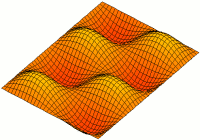
Photo from wikipedia
Abstract In this study, a computational fluid dynamics (CFD) model with three coarse graining algorithms is developed with the implementation of a layer based thermally thick particle model. Three additional… Click to show full abstract
Abstract In this study, a computational fluid dynamics (CFD) model with three coarse graining algorithms is developed with the implementation of a layer based thermally thick particle model. Three additional coupling methods, cube averaging method (CAM), two-grid method (TGM) and diffusion-based method (DBM), are implemented. These coupling methods are validated and compared with the widely used particle centroid method (PCM) for combustion of a biomass particle in a single particle combustor. It is shown that the PCM has a strong dependence on the grid size, whereas the CAM and TGM are not only grid independent but also improve the predictability of the simulations. Meanwhile, a new parameter, the coupling length, is introduced. This parameter affects the sampling of the gas phase properties required for the particle model and the distribution of the solid phase properties. A method to estimate the coupling length by using empirical correlations is given. In general, it is found that a too small coupling length underestimates the heating-up rate and devolatilization rate, while a too large coupling length overestimates the O2 concentration at the particle surface. The coupling length also has an influence on the distribution of the gas phase products.
Journal Title: Chemical Engineering Journal
Year Published: 2020
Link to full text (if available)
Share on Social Media: Sign Up to like & get
recommendations!